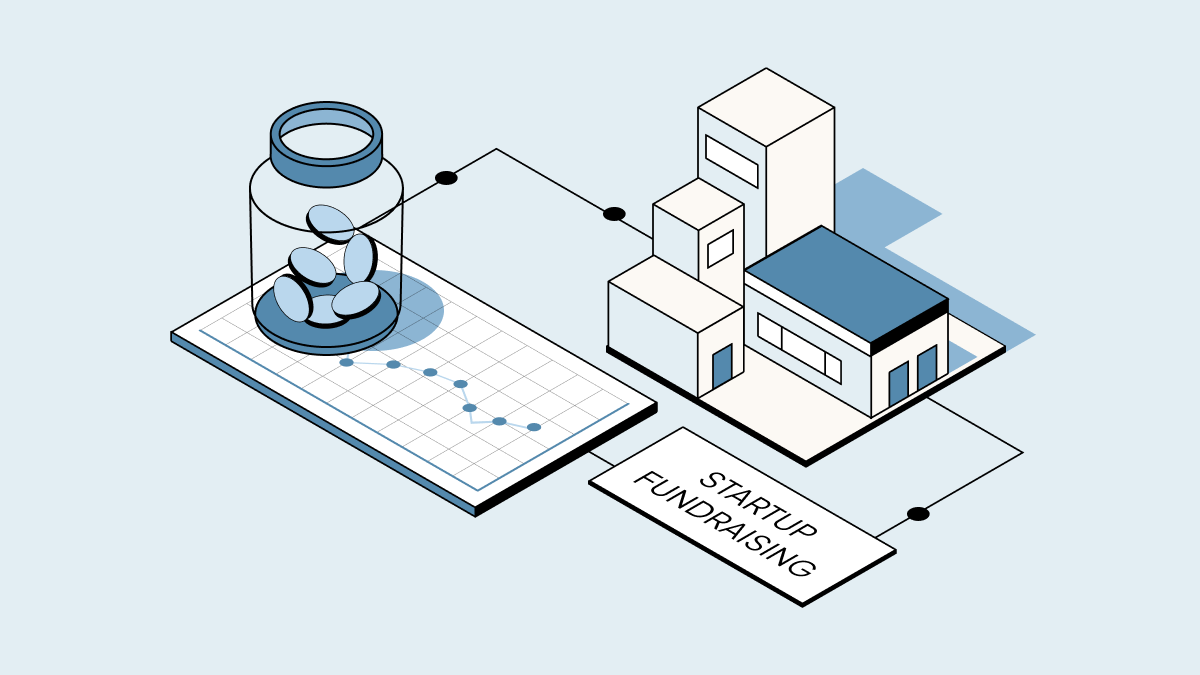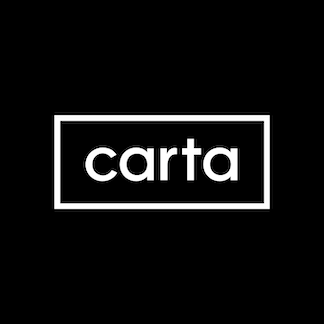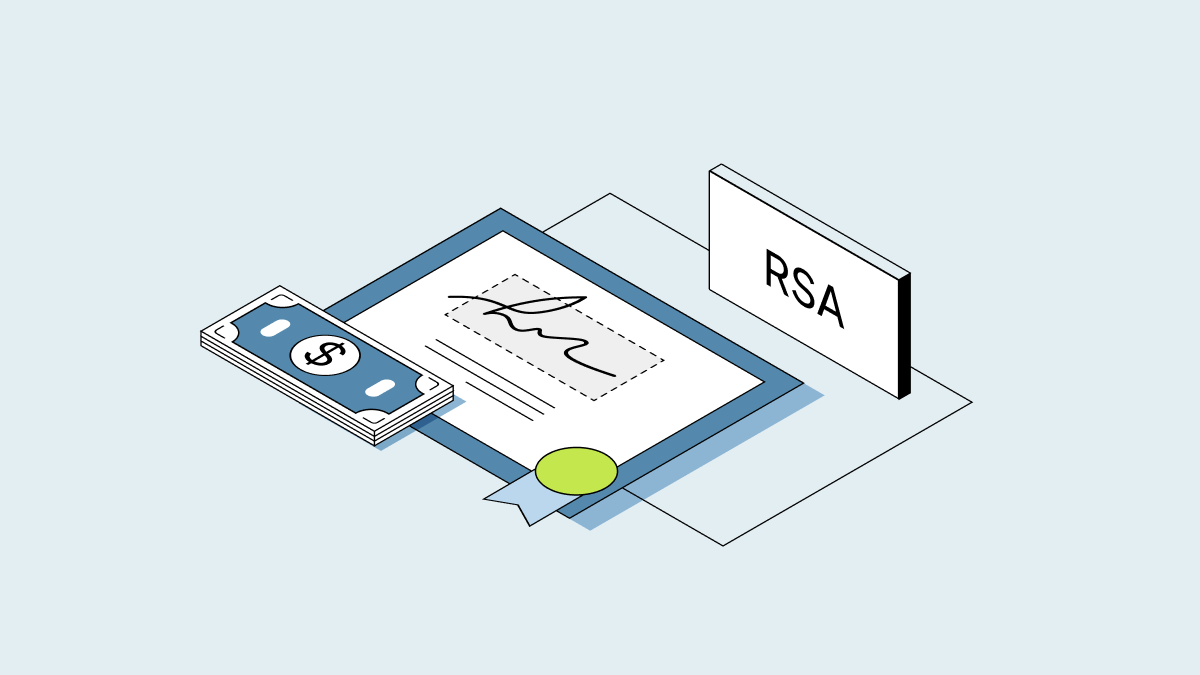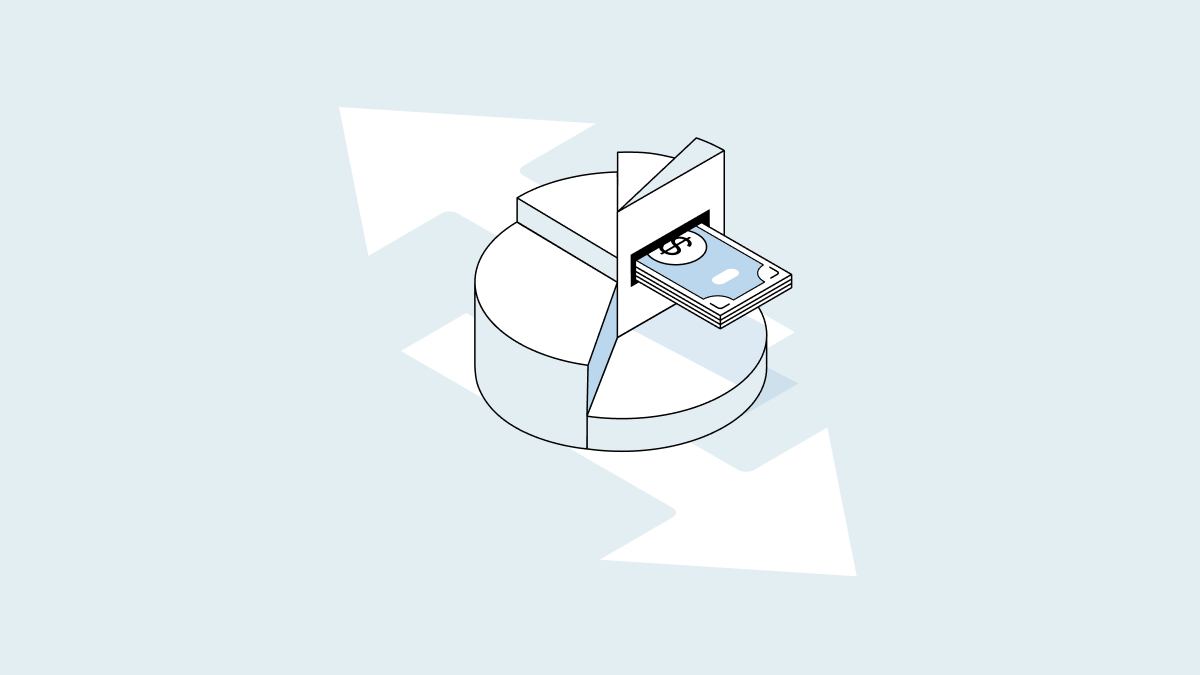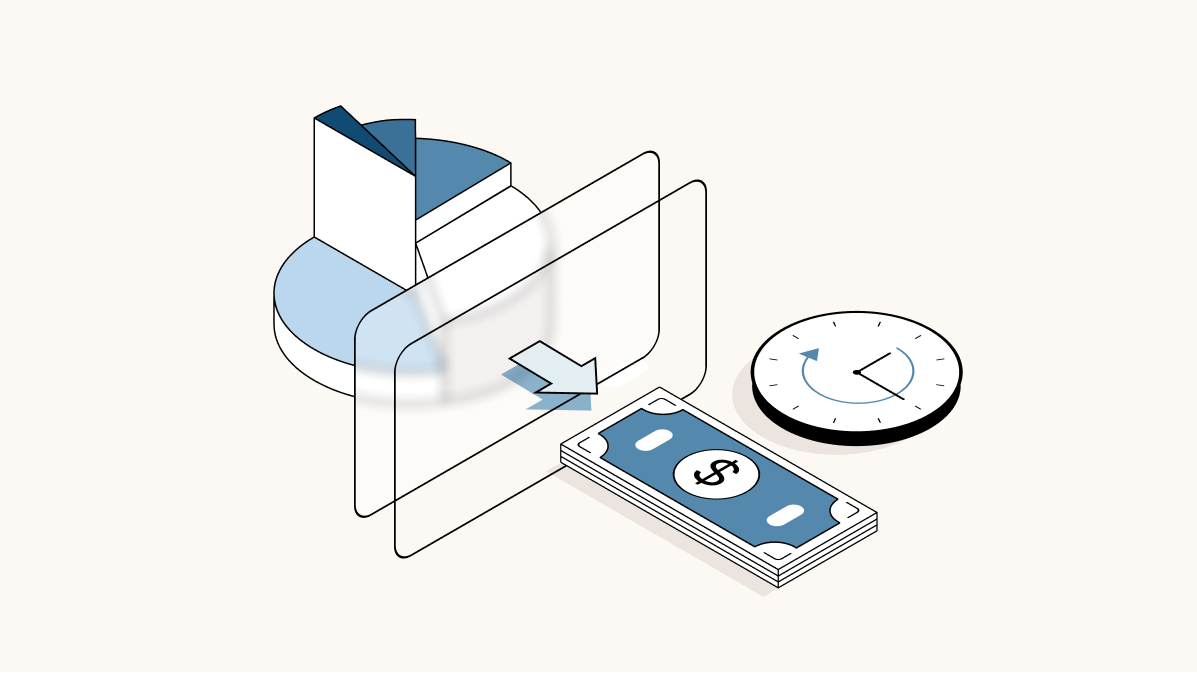Fundraising can supercharge your startup’s growth, but it’s tricky to know when to start the process. Raising funds isn’t as simple as pitching your idea and receiving money; it’s a choice you’ll want to think carefully about.
Each time you take money from investors, you’re giving them a piece of ownership in your company. This dilutes your personal equity (reducing your share of proceeds in an eventual exit) and opens the door to outside feedback and opinions. Investors aren’t just sponsors—they can influence marketing, hiring, and product development, especially if they have a seat on your company’s board of directors.
In this guide, we’ll cover everything you need to know about fundraising.
Fundraising 101: How to get funding for a startup
Let’s start by reviewing some basic fundraising terms and concepts, including types of investors and the different ways to fundraise.
Types of investors
Capital can come from virtually anywhere, but these are some of the most common sources of startup financing:
-
Angel investors: An angel investor is someone who uses their own money to invest in a private company.
-
Venture capital (VC) firms: A venture capital firm pools outside capital to invest in private companies, usually high-growth startups.
-
Institutional investors: Institutional investors are typically large asset managers that pool funds from a variety of different institutional and retail investors to invest in growth-stage or pre-IPO startups, as well as other asset classes like private equity and public market investments. Examples of institutional investors include investment firms like Fidelity and T. Rowe Price. The category can sometimes extend to banks, hedge funds, and family offices.
-
Accelerators and incubators: Accelerators and incubators are programs that guide, mentor, and help fundraise for startups in exchange for an equity stake—and sometimes a cash investment as well—in the company.
-
Bootstrapping: Bootstrapping is the process of using personal finances, revenue, and free or low-cost resources to build a business without outside investment.
Types of startup funding
Your funding options will vary depending on which stage your company is in. Most startups aim to raise enough capital for a cash runway that will last until the next round of funding. For startups at every stage, the average wait time between rounds has grown in recent years. In early 2023, the time between rounds ranged from 24 to 30 months. The longer wait time between rounds might require companies to raise even more funds to meet their runway needs.
Typical fundraising options for founders include:
-
Convertibles: For most companies, seed-stage financing is unpriced because it’s usually faster and easier to use convertible securities (like SAFEs and convertible notes) instead of doing a full preferred stock financing.
-
Priced rounds: When a startup is raising a round of financing by issuing preferred stock at a specific valuation, it’s known as a priced round. In other words, priced rounds are equity investments based on a negotiated valuation of a company. Most investors in the Series A round and beyond want immediate ownership equity in preferred stock, with all related rights and preferences. Therefore, most series fundraising is in the form of a priced round.
The types of funding structures listed above can also have various characteristics, depending on how the money is distributed or the terms and conditions of the agreement. Rounds may take shape in the following ways:
-
Down round: A down round is when a company raises a VC financing round and the pre-money valuation of the company is lower than the post-money valuation of the previous round, resulting in a lower price per share. When a company raises a round with a higher valuation than the previous round, it’s called an up round.
-
Tranched financing: A type of financing in which investors release funds in parts as your company hits certain milestones instead of providing one lump sum
-
Bridge round: A bridge round is extra money a company raises between priced rounds that helps founders extend their last round of fundraising.
Alternative fundraising options
There are multiple ways to fund your company. Other funding options include:
-
Venture debt: A bank loan for companies between venture capital funding rounds, with less associated dilution for shareholders. This is one type of debt financing.
-
Equity crowdfunding: The process of collecting small contributions from a large number of people, typically through online crowdfunding platforms. Some crowdfunding websites specialize in fundraising for businesses and can get the pitch out to a large group of general investors ( unaccredited investors included).
-
Other sources: Some companies might qualify for public or private small business loans, small business grants, or other business credits with a longer payoff period.
Rounds of funding
Now that we’ve covered the basics, we’re ready to dive into the different stages of priced rounds (simply called “rounds”) of startup fundraising. Each round has a different purpose and process.
Pre-seed round
If you’ve identified a market opportunity, just started building a minimum viable product (MVP), or have a prototype of your product, then your company is likely in the pre-seed stage.
Pre-seed funding is often used to develop your good idea; investors are essentially making a bet on the founder and the market before any “product-market fit” (or even a true product) is established. That means the very early investors in your company are taking on a lot of risk. As an alternative to pre-seed funding, many startup founders use their own money to bootstrap, get operations off the ground, and build a prototype.
Pre-seed rounds can come from various sources:
Angel investors
Angel investors, also known as angel funders, or simply “angels,” use their own capital to invest in small startups or entrepreneurs, typically in exchange for ownership equity in the company or a future right to receive equity in the company. Though angels are usually high-net-worth individuals investing their own money, the entity that actually makes the investment may be a different vehicle, like a limited liability company (LLC), a business, a trust, or an investment fund.
Angel investments often go to helping startups take their first steps. They may provide a one-time investment or ongoing funding to support your company through its early stages.
Syndicates
A syndicate is a group of people who combine their resources to make a single investment in a company through special purpose vehicles (SPV). SPVs are legal entities that enable multiple angel investors to pool capital and make an investment in a company.
Friends and family
This type of initial funding will depend on the liquidity that your personal network can muster up.
Bootstrapping
Some early-stage startup founders self-fund by using savings or maxing out credit cards to stand-up a decent MVP, sometimes called bootstrapping.
Accelerators and incubators
If you’re looking for mentorship, then a startup accelerator or an incubator can be a highly valuable funding option. However, admission into an accelerator is highly competitive, with acceptance rates often in the low single digits. Many accelerator programs focus on a particular industry or space—like San Francisco’s Acceleprise, which is set up exclusively for pre-seed B2B SaaS companies.
If accepted into an accelerator, you’ll join a cohort of companies for a fixed period of time—typically three to 12 months—and access exclusive learning and networking opportunities, including meetups, classes, and coworking spaces. In exchange for or in addition to $50,000 to $150,000 of funding, most accelerators take a non-negotiable equity share percentage, usually 3–7%.
Pitch competitions
Pitch competitions are essentially a contest where you present your business idea to a panel of experts for a chance to win an investment. Some pitch competitions don’t require more than a pitch deck and a well-thought-out go-to-market (GTM) business plan. Even if you don’t win funding, competitions could be just the exposure you need to garner interest from investors who you might otherwise never get to pitch to.
Micro and pre-seed funds
Micro VCs are traditionally structured VC firms that pool money to make investments on behalf of third-party limited partners (LP). In contrast to later-stage venture capital, which is used to invest in companies looking to fund growth, micro venture capital consists of smaller seed investments, often not more than $500,000, in companies that have yet to gain significant traction.
Seed round
The seed round is one of the first funding rounds—if not the first—for a company. By this point, you likely have a product you can demo, but you might still need to create a user-ready MVP and conduct beta testing before you’re ready to fully launch your product in the market.
Investors who are likely to be interested at the seed stage range from angel investors to venture capital firms specializing in seed funding. Typically, seed funding rounds are still relatively small. The median fundraising amount for seed rounds in early 2023 was $3.1 million, according to Carta’s data.
Seed funding can be used for a variety of a startup’s needs, including product development or expanding the team. There are also seed accelerators, like Y Combinator, that give participants the opportunity to demo a solution to major investors.
Seed-stage companies are still eligible for angel and syndicate investments, in addition to some other funding options:
Equity crowdfunding
Equity crowdfunding, also referred to as crowd investing, investment crowdfunding, or crowd equity, enables broad groups of investors to give your business money in return for a partial ownership stake in your company. Equity crowdfunding is commonly offered on crowdfunding platforms, like WeFunder, Republic, and SeedInvest, that provide individual investors with access to pre-vetted startup investment opportunities.
Multi-stage funds
A multi-stage fund is a single fund that invests in companies at multiple stages, including the seed round. Some firms offer seed funding to entrepreneurs, enabling them to work on proof-of-concept for their product or idea. Other firms may provide “main” or standard venture capital to Series A companies or companies in other growth stages.
Others focus on a broader range, from seed through growth companies.
Convertible securities
In contrast to a priced round, an investor in a seed round will typically provide cash in exchange for a convertible security (convertible) during an unpriced round. This type of investment lets founders raise money while postponing protracted negotiations on the company’s valuation until a later time. Convertible notes and SAFEs are the two most common types of convertible instruments. Convertible securities are then automatically converted to actual equity shares at a later time, during the first priced round.
Series A
Around the time you’re ready to raise the Series A round, you’ll be focused on getting your product into the market, demonstrating product-market fit, acquiring customers, and generating revenue. Companies at this stage have usually developed a substantial user base and proven that they are primed for success on a larger scale with recognition and business traction in the market. Series A funding is typically a company’s first significant round of venture capital, and the checks tend to be larger at this stage.
What sets a Series A round apart?
Institutional investors are more likely to come in during this round because they can see metrics related to revenue growth, customer acquisition cost, and lifetime value. Instead of investing capital in exchange for convertible debt or SAFEs, most investors in the Series A round want immediate ownership equity in preferred stock, with all related rights and preferences.
To determine how much equity they’ll get, you’ll have to negotiate a formal valuation of your company. You’ll also have to navigate negotiating term sheets with your attorney’s help; these outline the terms of the investment and serve as the basis of the definitive legal agreements.
As a founder, you can expect to raise anywhere between $1 million to upward of $10 million with a Series A. According to our data, the median round size for Series A companies was $6.4 million in Q1 2023.
Series B, Series C, and beyond
Series B, Series C, and Series D rounds help expand your market reach and grow your company internally. By the time you reach a Series B round, you should have a significant user or customer base, plenty of traction, and a proven record of revenue growth. Investors usually come in during these later rounds to help with business development and expansion.
At this stage, especially Series C and onward, new “growth-stage” investors may sign on. These institutional investors, which can include private equity firms, typically invest larger amounts of money in more-mature companies that are a better bet to go public or be acquired for a significant amount, which make them a lower risk for investors.
When should you consider fundraising?
Each company’s trajectory is different, which means there’s no perfect time to start fundraising. The general rule is that you’re in a good position to consider raising funds when 1) you’ve validated that there’s a problem that needs to be solved and 2) you can demonstrate demand for the solution.
Getting that information usually involves heavy market research, thoughtful prototype production, and lots of experimentation.
Fundraising example
Let’s say you want to create a service that bundles customers’ TV streaming platforms into one central hub where they can see all their viewing options without having to toggle between apps. Before starting a priced round of fundraising, you decide to conduct market research about your potential customers, build a prototype and website, spread the word about your service, and encourage consumers to sign up for a free trial. If you get a lot of signups, you could use it to show investors the demand.
Bootstrapping your way through a successful experiment is a great signifier that you might be ready to raise funds, but it’s not an automatic indicator. Before you start raising a priced round, a few other factors will likely come into play.
Reasons to wait to fundraise
-
You need to generate more interest from your end user or customer. The type of product you build—and the people you build it for—can dictate when funds are available to you. For example, some investors don’t want to invest in a consumer-focused product unless there’s already a long waiting list of interested customers, while that target number of customers demonstrating traction may be lower for companies in enterprise or B2B.
-
You have enough resources to continue bootstrapping for a while. Think about the resources at your disposal, including cash, talent, and tools. If you have enough capital from crowdfunding or friends and family to continue bootstrapping your company, you may want to delay fundraising for a while. But if you don’t have enough money to hire the right talent or continue to build out your product, it may be time to consider raising money from outside investors.
-
You don’t have the time or bandwidth to invest in pitching. Pitching investors on your idea takes a lot of work. You have to create a pitch deck, contact the right investors, schedule meetings, and carve out space for conversations and follow-ups. If your focus is still on building out your prototype, you may want to hold off on pitching until you have more of a foundation.
Reasons to start fundraising
-
You already have a lot of traction with your end users or customers. If you’re still working on your prototype but already have a lot of clear demand for your product or service, you may want to run with it and start reaching out to investors.
-
You’re going to run out of cash and resources in six months. Fundraising doesn’t happen overnight. It can take three to six months of regular pitching and conversations with investors before you get any money. To avoid falling behind or missing opportunities to get in front of customers, you may want to start looking for funding before you need it.
-
You need more support. Fundraising doesn’t just give you capital—it can also provide you with valuable investor support and mentorship. If you’re at a point in your company’s growth where you need guidance from experienced investors to gain momentum, fundraising could be smart.
How much capital should you raise?
Figuring out how much money to raise is a complicated process at best. Raise too much money, and you risk over-diluting your ownership stake in your own company and making it difficult to raise another round at a higher valuation; raise too little, and you risk having too few resources to achieve the milestones you need to successfully raise your next round.
Here’s the simple answer: You should raise only as much money as you need to get to the next phase of your company’s growth. There’s no perfect formula, but there are a few areas of your business you can look at to arrive at a dollar amount you’re confident in.
Here are three factors to evaluate:
Your first milestone
Milestones are the specific benchmarks you want to hit on the way to reaching your broader company goals. Most milestones are quantifiable achievements that indicate where your company stands, growth-wise. Think: launching your MVP within 12 months or securing your first 1,000 customers by a certain date.
When contemplating your most important milestones for fundraising, there are two underlying questions you may want to ask yourself:
-
Where do you want your company to be by the time you reach the next stage of fundraising?
-
What specific metrics do you need to show to get there?
For each milestone, consider the following components:
-
Resources: What will it take to reach the milestone? Whose specific talents and skills will you need? What kind of tools will you rely on?
-
Time: How many months or years will it take to reach the milestone?
-
Costs: How much money will you need to reach the milestone?
Your runway
Cash runway is the amount of time you can realistically fund company operations before you run out of money. If you have $500,000 in funds, for example, and it takes roughly $100,000 a month to run your company, you have five months of runway. In general, you want to raise enough money to give yourself at least 24 to 30 months of runway, since that’s typically the amount of time it takes to move from one round of funding to the next.
To figure out how much it costs to operate your company while working toward your next milestone, you have to consider:
-
Your team: How many engineers, marketers, salespeople, and customer support reps do you need to reach the next milestone you’ve defined? How much will it cost to support your team working full-time?
-
Your admin needs: How much will it cost to buy the right tech and equipment, rent office space, and budget for potential travel?
-
Your marketing and advertising budget: How much do you need to spend to build a website, create a social media strategy, run ads, and set up different distribution channels?
→ Calculate your burn rate with Carta’s free cash burn rate calculator
Once you figure out your company’s cash burn rate (total monthly spend for people, admin, and marketing), multiply that figure by the number of months you think it will take to reach your next milestone. That will give you a clear idea of the minimum amount of cash flow you need to work toward your next phase.
Keep in mind that this number is often just a starting point. It’s smart to cushion your budget to account for unexpected problems and delays. In general, it’s better to have more cash on hand and not end up needing the money than it is to have to account for every penny and still come up short.
Your ideal valuation
Your company’s valuation is an assessment of your company’s worth, but it’s also a direct byproduct of two factors: the amount of money you raise and the amount of equity you’ve given up to investors. Most founders sell around 20% of the company’s equity to investors at the seed stage and another 15.5% during the Series A round, according to Carta data from Q1 2023.
After you define your company milestones and estimate your monthly operating costs, let’s say you determine you need to raise $1 million during your seed round. If you don’t want to give up more than 20% of company equity, you’ll need to shoot for a negotiated post-money valuation of $5 million (since $1 million is 20% of $5 million). That figure gives you the capital you need to reach your next goal without diluting your equity too much.
Remember: Valuations are fluid. A founder may go into the fundraising process with an ideal valuation in mind, but they may need to be flexible. When negotiating your ideal valuation, your goal should be to raise enough money to reach your next phase of growth, satisfy investors, and maintain a reasonable ownership percentage.
What to do before you start fundraising
If you think you’re ready to start fundraising, take these steps to set yourself up for success:
Chat with fellow founders
Consider reaching out to other founders and mentors who’ve had success reaching their milestones on time and securing capital. Ask them what they learned from their raise and what they would do differently if they could. Specifically, ask how they defined their milestones, how much cash they needed to reach their next round, and whether their fundraising target was on point.
Ask your attorney for advice
Your startup attorney may have guidance on what you need to do logistically to prepare for fundraising. You might need to firm up your idea from a legal or regulatory standpoint, cross-reference your product or service with competitors, or apply for patents.
Gather data & crunch the numbers
It’s critical that you have the right metrics to back up your company’s growth and profit potential. You need to be able to show investors why it’s beneficial to bet on your company and why you will be a good steward of their money by being able to explain your spending costs, estimated runway, and funding needs.
Prepare your pitch
Before you start fundraising, you need to build a compelling pitch deck—one that explains who you are, what problem your company is solving, and why investors should care.
Target the right investors
Not all investors are created equal. To up your chances of securing funds, it’s important to target investors who have experience investing in your industry and who’ve demonstrated an interest in founders with similar backgrounds and missions as you.
But tread carefully: Some investors might be invested in your competitors and may be conflicted out of investing in you (or worse, may use your info to aid their portfolio company).
Starting the fundraising process
When you choose to fundraise and how much you raise comes down to your unique needs and goals as a company—and a lot of it is personal to you.
At Carta, we help startups with fundraising, compensation, valuations, equity management and much more. Talk to us to find out how we can help you grow.
